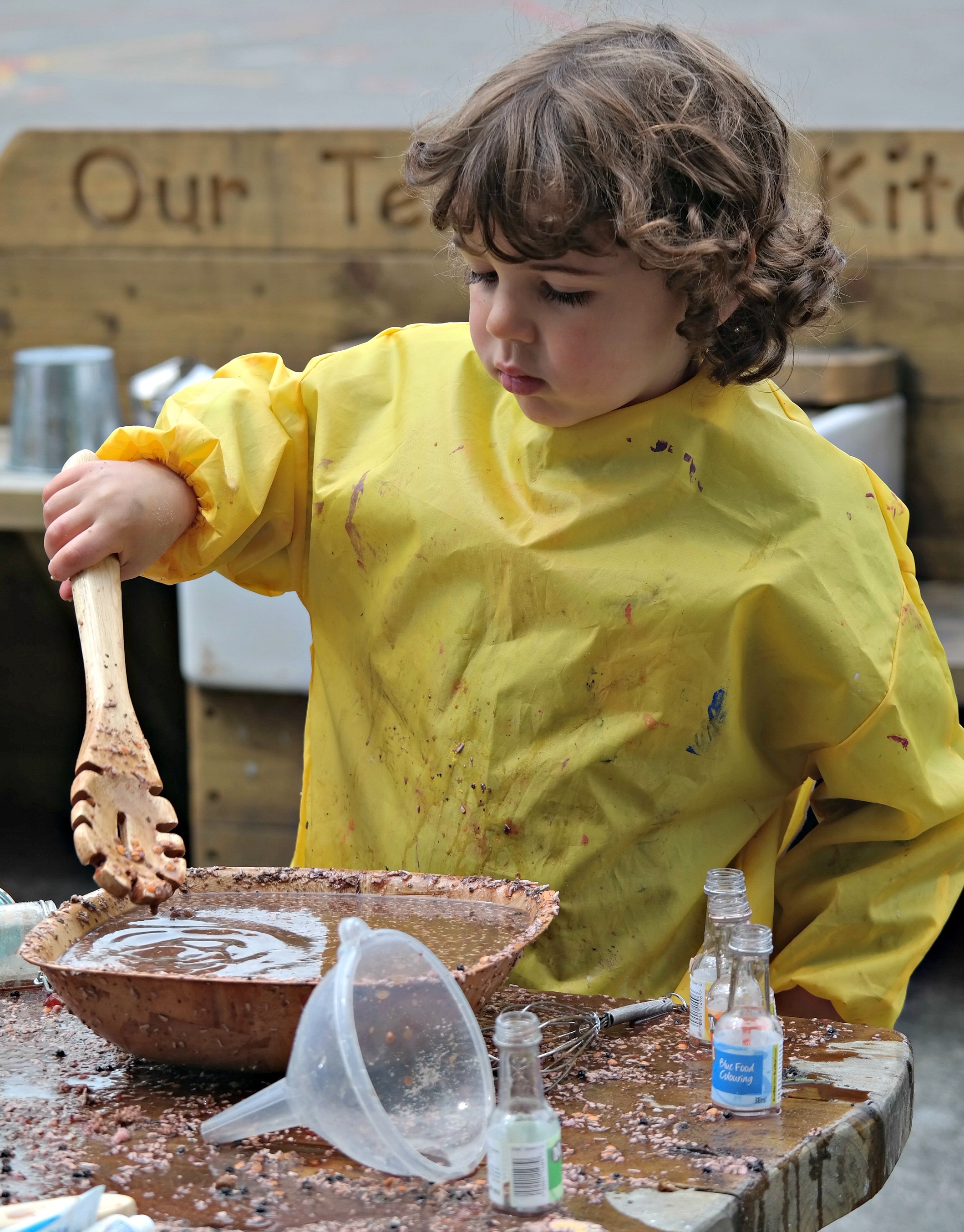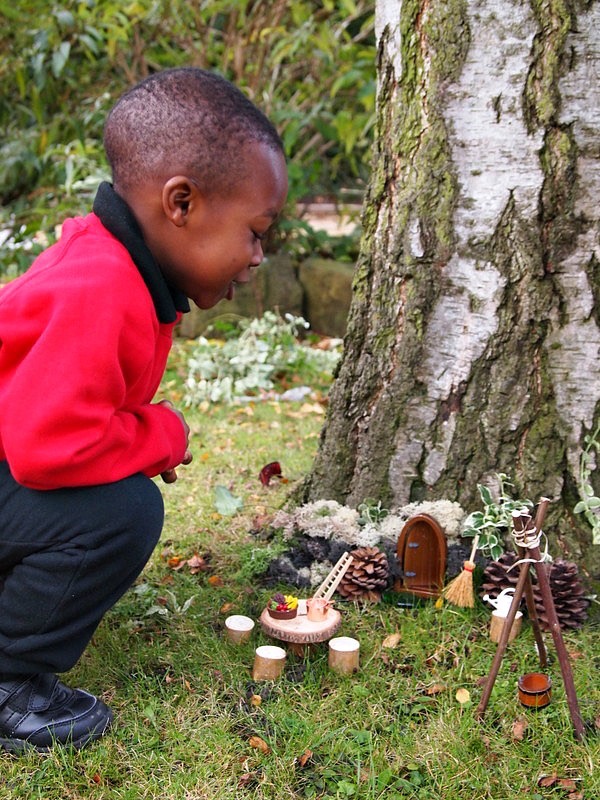
Child Development
Alistair Bryce-Clegg talks Child Led Learning in the Early Years
There was a time in Early Years where ‘topic’ was king! Often these topics would be linked to National Curriculum subjects and would last for a whole half term. I remember once being asked to do a topic with my Reception children which was to include the 7 main types of housing in Great Britain. I am still not sure why Reception children need to know that – but seemingly they did!
Your topic wasn’t just a concept that you introduced the children to, it was all encompassing. Whatever you were talking about was also the theme for every and all activities that the children were invited to take part in.
If it was Spring, we would look at daffodils, paint daffodils, draw daffodils, make daffodils out of egg boxes, pretend to be daffodils in music and movement – It is a wonder that more children didn’t disengage from the whole process.
What you got were adults working really hard to try and make the mundane and often tenuous look and sound interesting. Once the initial novelty of the activity the adult was trying wore off, so did the interest. Thankfully those days are gone.

As adults, we want to introduce children to concepts, ideas and experiences that they have never had before. We want to give them the thrill of finding a dinosaur egg on the carpet or realising that fairies have moved into the outdoor area. But, these are prompts and enhancements for learning within play. They should not dominate the provision.
When it comes to ‘topic’ or ‘theme’ I like to keep it to adult input and enhancements. A good adult can really engage children with any subject. The children’s interest comes from the skill of the adult. Once the children have left the adult then their interest in the ‘topic’ can often wain, not to mention their lack of experience which will inhibit their ability to play and explore.
When I am delivering training I will often say to my delegates that I am going to spend 15 minutes talking about knitting. When I ask them how they feel about it a few (knitters) are quite excited at the prospect, but lots of the non-knitters aren’t so keen. So, for 15 minutes I talk about knitting. I show them some novelty knitted items, a park for children in Japan that has been knitted over many years by one woman. I also tell them a funny story about a piece of knitting and a plastic doll (too long to tell here, but it always gets a laugh)! Our 15 minutes goes quickly and people have laughed, seen things that are interesting and amazing. Even the non-knitters are engaged!
Then I say that while we have been talking, outside of our conference room we have set up lots of activity stations and that for the next hour they will all have the chance to go and use all of the things that are available. I tell them that there are iPads, a creative table, a mark making table, things to read, things to sort – the list goes on.
My final piece of information for them is that all of the activities they are about to engage with are linked to our ‘topic’ knitting! So on the creative table, you can knit. On the mark making table you can make knitting patterns, there are lots of knitting magazines to read and in the maths area you can sort balls of wool.
My next question is how long would they be prepared to stick at the knitting activities? Would they even try them at all?
Imagine our knitting topic goes on for 2 weeks. That would be 10 sessions of continuous provision all spent having to do knitting related activities. Unless you are an avid knitter – that doesn’t sound great.
But that is what we can do to our children if we become too topic led. We are doing a ‘jungle’ topic so let’s have jungle in the small world and role play. I have made a sign for my easel that says ‘can you paint a jungle animal?’ On the creative table we are making jungle masks…the list goes on.

What this approach doesn’t do is reflect children’s interests or curiosity. It is also the case that nowhere does it state that children are required to paint an elephant before they leave EYFS!
I am always getting practitioners to try and think about skill or experience in the continuous provision. So in my painting area this week, what skill or experience am I offering the children. Is it a new resource to work with, a new medium to try or a new skill? Even though I have been talking to them about ‘jungle’ in my focused sessions, it doesn’t matter what they paint because I am trying to teach them a transferable skill, rather than an event or activity.
On my creative table I might be looking at the skill of collage, cutting or joining. I might enhance this area with some prompts linked to our jungle theme, but if the children want to make something completely different then that is brilliant because they are applying the skill to their own interest and are therefore likely to be far more engaged and remember it.
Now that we have got the freedom to move away from the ‘topic box’ it would be a shame to waste the opportunity.
Keep your topic/theme to sessions of adult input. When you are planning for Continuous Provision makes sure that you are looking at opportunities for children to explore their own interests and learn new skills rather than topic related activities.
Make sure that your enhancements are just that, an enhancement to a bank of resources that will take children’s learning forward not trap them in a topic subject.
I always ask myself ‘what is my expectation of play’ when I set up any provision. If I put jungle animals in my small world area because of my topic, what do I expect my children to do with them? How do you ‘play’ jungle? The answer is that most children will struggle and you will end up with lots of lions and tigers scrapping!

The question I need to answer first is why do I have a Small World Area? What can children learn through Small World play? Do I have a constant bank of resources that supports this learning? If so, then if a child comes to my Small World area and cannot or does not want to engage with jungle play then there are plenty of other things that they can engage with to support their learning.
Our areas of provision should be planned for continuous provision first and then some of them enhanced with prompts from our topic that allow children to engage if they are interested and adults re enforce their teaching through play.
High-level attainment comes from high-level engagement. To get maximum engagement for all children we need to have a diverse approach to the themes that we use in our teaching rather than just stick to one.
Now then, where did I put my knitting!
Alistair
Alistair enjoyed a successful 10 year career as the Head teacher of three-form entry Infant school and Early Years Unit in Cheshire. Alongside his headship, he established a consultancy career specialising in the education of children in the Early Years.
Demand for his consultancy became so great that Alistair left headship and established ABC Does… (abcdoes.com).
Most of his time is spent supporting practitioners in their settings or delivering key notes and training, specialising all aspects of Early Years practice and management for both the maintained and non-maintained sectors nationally and internationally.
Alistair is also an award-winning author and product designer, whose work has been published in a number of books and magazines. Alongside support and training for a range of settings and schools, Alistair also works Internationally and with Local Authorities across the UK.



1 Comment
You must be logged in to post a comment Login